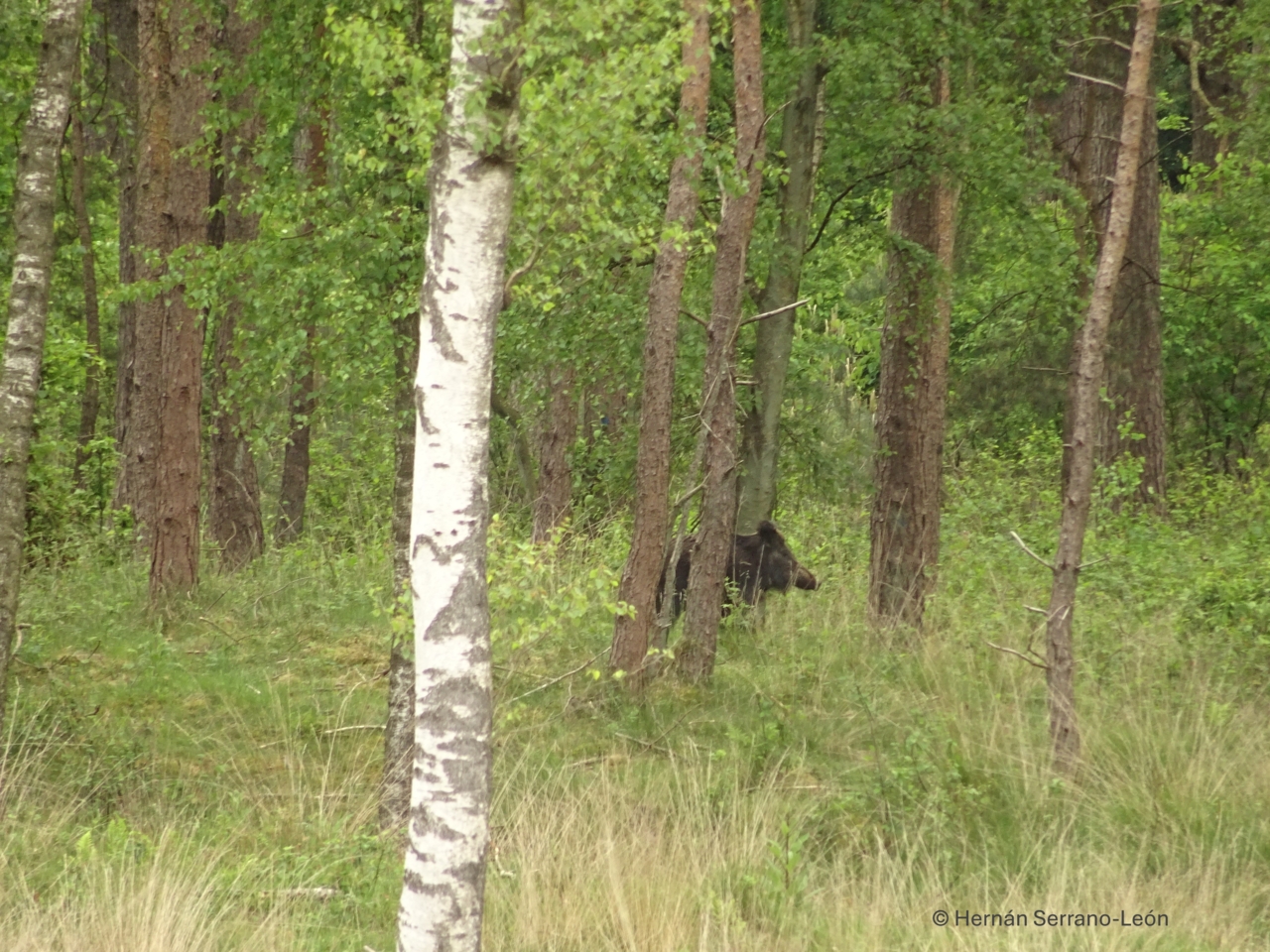Best Practice Knowledge Base
7.8 Regulation of wildlife or ungulate populations to reduce herbivory

Wild boar. Hoge Veluwe, Netherlands © Hernán Serrano-León
Regulating wildlife populations, particularly ungulates like deer, is a crucial strategy in forest restoration to mitigate excessive herbivory that impedes vegetation regeneration. Overabundant ungulate populations can overbrowse young trees and understory plants, hindering forest regeneration and altering species composition. Implementing population control measures, suchas culling, has been shown to protect biodiversity by reducing browsing pressure. Additionally, studies have demonstrated that excluding herbivores with physical barriers or deterrents can significantly enhance vegetation abundance in restoration sites. Another method, for example, has been to restore predator species, like wolves. Effective management of ungulate populations is essential to ensure successful forest restoration and vegetation diversity.
I. Guidelines
| Nº | Title | Author | Year | Focus Region | Language | Summary | Link |
| 1 | Forstliche Handlungsoptionen und deren Auswirkungen auf die Biodiversität und die Kohlenstoff-speicherung im Wald | BICO2 | - | Germany | German | General reccomendations for reducing browsing | https://www.wald-und-holz.nrw.de/fileadmin/Publikationen/Broschueren/241106_Broschuere_Handlungsoptionen_Kohlenstoffspeicherung_und_Biodiversitaet.pdf |
II. Books or book chapters
| Nº | Title | Author | Chapter | Chapter author | Year | Focus region | Language | Summary | Link |
| 1 | Plantation silviculture in Europe | Savill et al. | Protecting plantations from damage by wildfire, pests, and pathogens | - | 1997 | Europe | English | Practical considerations for risk management in plantation forests | https://global.oup.com/academic/product/plantation-silviculture-in-europe-9780198549086?cc=us&lang=en&# |
III. Scientific articles
| Nº | Title | Author | Year | Focus region | Language | Type | Summary | Link |
| 1 | Timing of the hunting season as a tool to redistribute harvest of migratory deer across the landscape | Loe et al. | 2016 | Norway | English | Experiment | Adjusting the hunting season time could reduce the ungulate damages | https://doi.org/10.1007/s10344-016-1004-2 |
| 2 | Monitoring populations of a guild of ungulates: implications for the conservation of a relict Mediterranean forest | Focardi et al. | 2015 | Italy | English | Observational study | Analyzes population dynamics of ungulate species in Italy, under the influence of hunting | https://doi.org/10.1007/s12210-015-0439-9 |
| 3 | Herbivory by wild and domestic ungulates in the intermountain west | Kie & Lehmkuhl | 2001 | United States | English | Narrative review | Review on the effects of ungulate hervibory and its regulation | https://hdl.handle.net/2376/981 |
| 4 | The prohibition of recreational hunting of wild ungulates in Spanish National Parks: Challenges and opportunities | Carpio et al. | 2024 | Spain | English | Discussion paper | Challenges and opportunities on regulating ungulate populations in National Parks in Spain | https://doi.org/10.1016/j.scitotenv.2024.171363 |
| 5 | The Expanding Thread of Ungulate Browsing—A Review of Forest Ecosystem Effects and Management Approaches in Europe | Hardalau et al. | 2024 | Europe | English | Systematic review | Review on the effects of ungulate herbivory and different regulation methods in Europe | https://doi.org/10.3390/f15081311 |
| 6 | Manipulating ungulate herbivory in temperate and boreal forests: effects on vegetation and invertebrates. A systematic review | Bernes et al. | 2018 | World | English | Systematic review | Review on the management of ungulate herbivory and its effects on vegetation and invertebrates | https://doi.org/10.1186/s13750-018-0125-3 |
| 7 | Landscape of fear in Europe: wolves affect spatial patterns of ungulate browsing in Bialowieza Primeval Forest, Poland | Kuijper et al. | 2013 | Poland | English | Observational study | Investigates how wolves influence browsing intensity and tree regeneration in Białowieża National Park | https://doi.org/10.1111/j.1600-0587.2013.00266.x |

